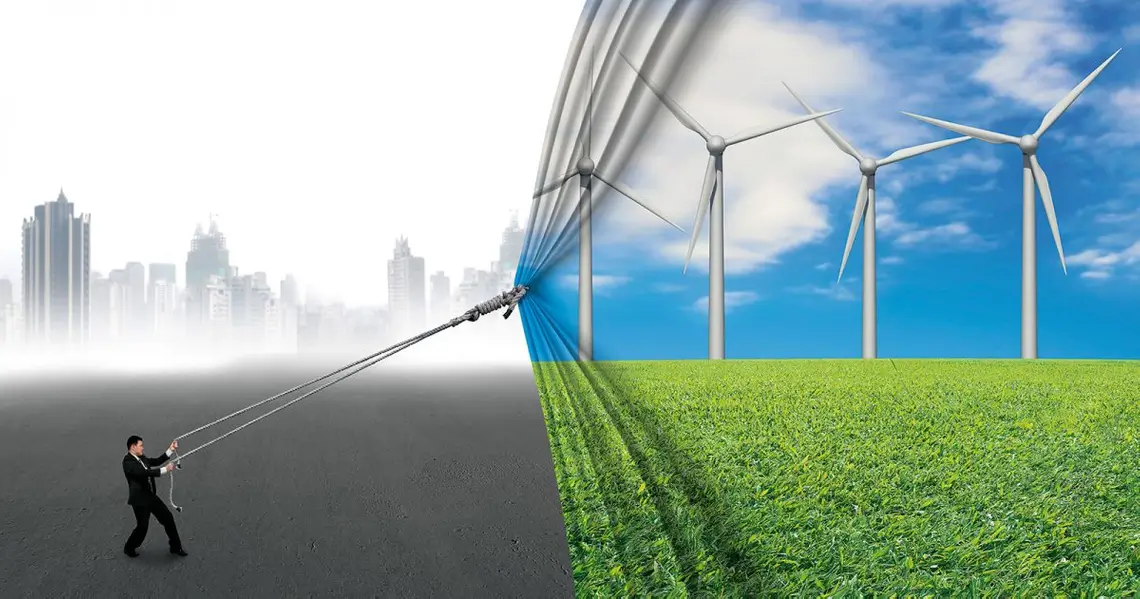Discovering Obernaft | A Comprehensive Guide to Its Impact on Modern Energy
Introduction to Obernaft
Obernaft is a strong player in the field of sustainable energy, a sector that is becoming increasingly important. This new energy source isn’t just another buzzword; it represents new ideas and the opportunity to transform how we power our lives. Obernaft stands out from other fossil fuel alternatives due to its unique properties and potential applications.
What is Obernaft, though? How did it come to be, and why should we care about what it means? Join us as we explore this intriguing topic, including its history, benefits, challenges, and potential environmental impacts that could alter the way we utilize energy. Get ready to learn more about Obernaft’s complex layers. This could change the way you think about modern energy solutions.
The History and Development of Obernaft
Obernaft became a key player in the energy sector in the late 20th century. It was first created to meet a growing need for fuel sources that are both sustainable and efficient. It quickly gained popularity among innovators and investors.
The idea arose because we needed to use fewer fossil fuels. Researchers sought alternatives that were not only feasible but also environmentally beneficial.
Obernaft has made significant progress in technology and production methods over the years. This change has made it easier to obtain and more affordable for both businesses and consumers.
As the world became more interested in renewable energy, Obernaft became a symbol of progress. Its growth showed that people were becoming more aware of environmental issues and promised to help the economy.
Obernaft is at the forefront of modern energy solutions today and will always be remembered as a game-changer in a world that is constantly evolving.
Advantages of Using Obernaft as an Energy Source
Obernaft is a suitable energy source for several reasons. One of its best features is how well it makes energy. Obernaft burns cleaner than regular fossil fuels, which means it releases fewer pollutants.
Another big plus is that it saves money. The processes for making and distributing goods have become more efficient, which has lowered prices for both consumers and businesses.
Obernaft also supports the efforts of many countries to achieve energy independence. Countries can reduce their reliance on oil imports from other countries by utilizing this resource domestically.
Obernaft’s versatility allows it to be used in many ways, making it an even more attractive energy option. It can be applied in various fields, from transportation to manufacturing, making it a versatile choice for a wide range of uses.
Additionally, new technologies are making it easier for us to utilize this resource in a manner that is both efficient and sustainable. This ongoing innovation could completely change the way we use energy.
Challenges and Controversies Surrounding Obernaft
Obernaft has some problems and controversies, despite its potential as a source of energy. A significant concern is the extraction process itself. Some people say that it can hurt local ecosystems. This raises concerns about the loss of biodiversity.
There are also economic effects. As Obernaft gains popularity, communities that rely on traditional energy sources may be affected. Workers and stakeholders may be at odds with each other if jobs are lost.
People’s opinions about Obernaft also play a part in the debate. False information can make people more afraid of the safety and environmental risks that come with this type of energy.
Regulatory frameworks struggle to keep pace with the rapid technological changes in oil and Gas production. Investors are uncertain because there are no clear rules, which makes it more difficult to secure funding for new projects.
These problems must be carefully considered to ensure that the modern energy solutions being implemented are ultimately beneficial.
Potential Impact on the Environment
When it comes to its environmental impact, Obernaft tells a complex story. As a new source of energy, its extraction and use raise concerns about the balance of ecosystems.
The process of making things can mess up habitats, especially in sensitive areas. This is detrimental to local animals and plants. Using water during extraction also affects the nearby ecosystems.
On the other hand, people often say that oil is cleaner than other fossil fuels. When used correctly, it could lead to lower carbon emissions. The possibility of reduced air pollution offers some hope to cities struggling with smog.
But we don’t know what the long-term effects will be. To fully understand how this energy source affects our planet’s complex systems, we must continue to conduct research. Stakeholders must carefully consider both the short-term benefits and the long-term consequences.
Comparing Obernaft to Other Energy Sources
Obernaft differs from other energy sources, particularly coal and natural gas. Because it burns cleaner, it releases fewer greenhouse gases, which makes it a better choice for the environment.
Obernaft provides a steady output when considering renewable energy sources, such as solar or wind power. Obernaft can provide a steady supply of energy, regardless of the weather, unlike solar panels that require sunlight or wind turbines that need breezy days.
However, people are still examining the cost-effectiveness of Obernaft. Even though the initial costs may be higher than those of traditional fuels, the long-term savings from reduced environmental harm could make this balance more favorable.
Switching to an Obernaft-based system could necessitate significant changes to the infrastructure. But these problems can lead to modernised buildings that are ready to meet future energy needs. Each source has its own unique set of characteristics, and understanding these characteristics helps us find a way to balance the energy landscape.
Future Possibilities and Innovations with Obernaft?
There are numerous possibilities for Obernaft in the future. New technologies are emerging that promise to improve the process. Researchers are exploring more advanced methods for extracting materials, which could lead to cleaner and more sustainable processes.
Additionally, incorporating Obernaft into renewable energy systems presents exciting new possibilities. Consider a hybrid model that combines traditional energy sources with the unique features of Obernaft. This could lead to a more balanced approach to generating energy.
Storage solutions could also be better. Finding better ways to store Obernaft can make sure that it works when demand is at its highest.
Working together across industries could lead to new ideas and uses for this resource. Partnerships between different sectors could lead to breakthroughs in how we use and harness oil. This synergy will be vital as we navigate the complexities of modern energy needs and environmental challenges ahead.
Conclusion
Obernaft is making big changes to the energy landscape. Its new features and possible uses give us a glimpse of a future where energy use is more efficient and long-lasting.
As we move into new areas, it will be essential for policymakers, business leaders, and consumers to understand both the benefits and drawbacks of Obernaft. As we examine its environmental impact and compare it to other energy sources, the conversation about this resource needs to continue evolving.
There are many options for the future. Obernaft-related innovations could lead to smarter energy solutions that meet our current and future needs, as long as research and development continue. Discussing this new resource in a meaningful way can help shape policies that prioritize sustainability while also embracing new ideas.
As society addresses the challenges of modern energy needs, it’s essential to stay informed about developments like Obernaft, so that we can make informed choices today that will lead to a cleaner tomorrow.
Read More: Fontlu



